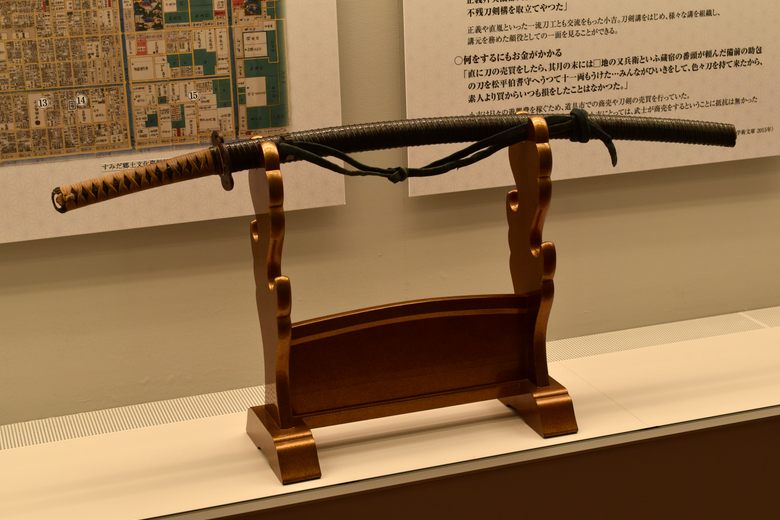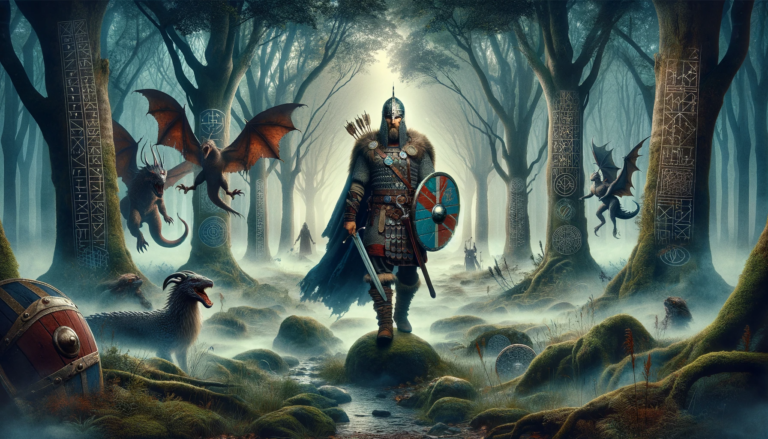The katana, a traditional Japanese sword, has been an iconic symbol of Japan for centuries. Known for its sharpness, strength, and beauty, the katana has captured the imagination of people all over the world. However, in recent years, there has been a resurgence of interest in katanas, not just as weapons but also as pieces of art and cultural heritage. This resurgence has sparked a renewed appreciation for the craftsmanship and tradition behind the katana, making it more than just a weapon but a symbol of Japanese culture.
In this blog post, we will explore the resurgence of the katana and its impact on modern-day society. We will delve into the history and legends surrounding this iconic sword, as well as its influence on pop culture and martial arts. We will also provide a guide for enthusiasts on collecting and maintaining katanas, as well as the art of forging them. Finally, we will discuss the future of katanas and their preservation in the 21st century.Katana’s Modern-Day Appeal: From Martial Arts to Pop CultureThe katana has a long and rich history dating back to the 14th century in Japan. It was primarily used by samurai warriors and became synonymous with the samurai code of honor, known as bushido. The katana was not only a weapon but also a symbol of status and power. However, with the decline of the samurai class in the late 19th century, the use of katanas as weapons diminished, and they were replaced by firearms.Despite this decline, the katana continued to hold a special place in Japanese culture and was often featured in literature, art, and theater. In the 20th century, the popularity of katanas spread beyond Japan, thanks to the rise of martial arts movies and anime. Katanas were prominently featured in these media, showcasing their deadly precision and elegant design.Today, the katana has become a symbol of Japanese culture and is highly sought after by collectors and enthusiasts. It has also made its way into mainstream pop culture, with katanas being featured in movies, TV shows, video games, and even fashion. This modern-day appeal of the katana has contributed to its resurgence and has sparked a renewed interest in its history and craftsmanship.The Influence of Katanas on Pop CultureKatanas have been featured in various forms of media, from movies like Kill Bill and The Last Samurai to video games like Ghost of Tsushima and Sekiro: Shadows Die Twice. These depictions often showcase the katana’s deadly efficiency and the skill required to wield it. This has led to an increased interest in martial arts and sword fighting, with many people taking up training in kendo, a modern form of Japanese swordsmanship.Moreover, katanas have also made their way into fashion and design. From clothing to accessories, the iconic shape and design of the katana have been incorporated into various products. This has not only made katanas more accessible to the general public but has also helped to spread awareness about their cultural significance.Collecting Katanas: A Guide for EnthusiastsFor many enthusiasts, collecting katanas is not just a hobby but a passion. However, collecting katanas requires knowledge and expertise to ensure authenticity and quality. Here are some tips for those interested in starting their own collection:Know the History and Types of KatanasBefore starting your collection, it is essential to understand the history and types of katanas. The most well-known type is the “samurai sword,” which refers to the curved, single-edged blade used by samurai warriors. However, there are other types of katanas, such as the tachi, which is longer and more curved than the samurai sword, and the wakizashi, a shorter sword often used as a backup weapon.It is also crucial to know the history of katanas and their significance in Japanese culture. This will not only help you appreciate the swords but also assist you in identifying authentic pieces.Look for Authenticity and QualityWhen purchasing a katana, it is essential to ensure its authenticity and quality. Many replicas and mass-produced katanas flood the market, making it challenging to find genuine pieces. It is best to purchase from reputable dealers or auction houses that specialize in Japanese swords.Moreover, it is crucial to examine the sword’s quality, including the blade, handle, and fittings. A genuine katana should have a sharp, well-crafted blade made from high-quality steel. The handle and fittings should also be well-made and fit the blade perfectly.Understand the Laws and RegulationsIn some countries, owning and collecting katanas may be restricted due to their potential use as weapons. It is essential to research and understand the laws and regulations in your area before purchasing a katana. In some cases, a license or permit may be required to own a katana.The Art of Forging Katanas: Preserving Ancient CraftsmanshipThe process of forging a katana is an ancient art that has been passed down through generations of Japanese swordsmiths. It requires precision, skill, and patience to create a high-quality katana. The traditional method of forging katanas, known as “tamahagane,” involves using iron sand and charcoal to create a type of steel called “tamahagane.” This steel is then heated, folded, and hammered repeatedly to remove impurities and create a strong and flexible blade.The Role of the SwordsmithThe swordsmith, also known as “tosho,” is a highly skilled craftsman who specializes in forging katanas. They are responsible for every step of the process, from selecting the materials to shaping and polishing the blade. The swordsmith’s expertise and attention to detail are crucial in creating a high-quality katana.The Importance of Tradition and RitualThe art of forging katanas is steeped in tradition and ritual, which adds to the mystique and allure of these swords. For example, before beginning the forging process, the swordsmith will perform a purification ritual, known as “misogi,” to cleanse their mind and body. This ritual is believed to bring good luck and ensure the success of the sword.Moreover, the swordsmith will also engrave their signature or symbol on the tang of the sword, adding a personal touch and marking it as their creation. This tradition has been passed down for centuries and is still practiced by modern-day swordsmiths.Famous Katanas in History and LegendsKatanas have played a significant role in Japanese history and mythology, with many famous swords becoming legendary symbols. Here are some of the most well-known katanas in history and legends:Kusanagi-no-TsurugiAlso known as the “Grass-Cutting Sword,” Kusanagi-no-Tsurugi is one of the three sacred treasures of Japan. According to legend, this sword was discovered inside the body of an eight-headed serpent by the god Susanoo. It is said to have magical powers and was given to the first emperor of Japan, Jimmu, as a symbol of his divine right to rule.Totsuka-no-TsurugiAnother one of the three sacred treasures of Japan, Totsuka-no-Tsurugi, is also known as the “Sword of Length.” It is said to be the sword used by the god Izanagi to kill the fire god, Kagutsuchi. This sword is often depicted as a long, straight blade with a sharp point.MuramasaMuramasa was a famous swordsmith from the Muromachi period (1336-1573) known for creating katanas with exceptional sharpness and durability. However, it is said that his swords were cursed and would drive their wielders to madness or violence. This legend has been popularized in various forms of media, including video games and anime.Katana vs Sword: Unraveling Similarities and DifferencesThe terms “katana” and “sword” are often used interchangeably, but there are some key differences between them. Here are some similarities and differences between katanas and other types of swords:SimilaritiesBoth katanas and swords are bladed weapons designed for cutting and thrusting. They also have a handle and a guard to protect the wielder’s hand. Moreover, both katanas and swords require skill and training to use effectively.DifferencesThe most significant difference between katanas and swords is their design and origin. Katanas are traditionally Japanese swords with a curved, single-edged blade, while swords can refer to various types of weapons from different cultures. Katanas are also typically longer and more lightweight than swords, making them easier to wield.Maintaining and Displaying Katanas: Ensuring Preservation and AuthenticityProper maintenance and display are crucial in preserving the quality and authenticity of katanas. Here are some tips for maintaining and displaying your katanas:Cleaning and OilingKatanas should be cleaned regularly to remove any dirt or debris that may cause damage to the blade. It is best to use a soft cloth and a mild cleaning solution to gently wipe the blade. After cleaning, the blade should be oiled to prevent rust and maintain its sharpness.Proper StorageKatanas should be stored in a dry and cool place to prevent rust and damage. It is best to use a sword stand or rack to display katanas, as this will not only showcase their beauty but also prevent them from getting damaged.Avoiding Direct Sunlight and HumidityDirect sunlight and high humidity can cause the blade of a katana to warp or rust. It is essential to avoid displaying katanas in areas with direct sunlight or high humidity levels. If possible, it is best to store katanas in a room with controlled temperature and humidity.Katana Culture Beyond Japan: Global Influence and AppreciationThe popularity of katanas has spread beyond Japan, with many people all over the world appreciating their beauty and cultural significance. This global influence has led to the creation of various communities and organizations dedicated to preserving and promoting the art of forging and collecting katanas.The Society for the Preservation of Japanese Art SwordsThe Society for the Preservation of Japanese Art Swords (Nihon Bijutsu Tōken Hozon Kyōkai) was founded in 1948 and is one of the most prestigious organizations dedicated to preserving and promoting the art of Japanese swords. They hold regular exhibitions and lectures on katanas and provide resources for enthusiasts and collectors.The All Japan Swordsmith AssociationThe All Japan Swordsmith Association (Nihon Tōken Gakkai) was established in 1952 and is an organization that brings together swordsmiths, sword dealers, and enthusiasts. They hold annual conferences and workshops to promote the art of sword making and educate the public about katanas.Training with the Katana: Techniques and EtiquetteFor many people, training with the katana is not just about learning how to wield a sword but also about embracing the values and traditions behind it. Here are some techniques and etiquette to keep in mind when training with the katana:KendoKendo, also known as “the way of the sword,” is a modern form of Japanese swordsmanship that focuses on using bamboo swords and protective gear. It is a popular martial art that has gained global recognition and is often used as a form of physical and mental training.IaidoIaido is a traditional Japanese martial art that focuses on the quick and precise drawing of the sword from its scabbard. It is often practiced with a real katana and emphasizes the importance of discipline, concentration, and control.EtiquetteWhen training with the katana, it is essential to follow proper etiquette and show respect for the sword and its history. This includes bowing before and after handling the sword, keeping the blade pointed downwards, and never using the sword for anything other than its intended purpose.The Future of Katana: Evolution and Preservation in the 21st CenturyAs we move further into the 21st century, the future of katanas remains uncertain. With advancements in technology and changes in societal values, the traditional art of forging katanas may face challenges in preserving its authenticity and relevance. However, there are efforts being made to ensure the continuation of this ancient craft.One such effort is the use of modern technology in the forging process. While traditional methods will always hold a special place in the hearts of enthusiasts, incorporating modern techniques can help improve the quality and efficiency of creating katanas. This can also make them more accessible to a wider audience.Moreover, there are also organizations and individuals dedicated to preserving the art of forging katanas and passing down the knowledge and skills to future generations. By educating the public and promoting the cultural significance of katanas, we can ensure that this iconic sword will continue to be appreciated and admired for years to come.ConclusionThe resurgence of katanas in modern-day society has brought about a renewed appreciation for this iconic sword and its cultural significance. From its origins as a weapon used by samurai warriors to its influence on pop culture and martial arts, the katana has captured the imagination of people all over the world.For enthusiasts and collectors, katanas are not just objects but pieces of art and cultural heritage that require knowledge and expertise to appreciate fully. The art of forging katanas is an ancient tradition that continues to be passed down through generations, and efforts are being made to ensure its preservation and evolution in the 21st century.As we continue to rediscover and appreciate the beauty and craftsmanship behind katanas, we can also gain a deeper understanding of Japanese culture and values. The katana’s resurgence is a testament to its enduring appeal and its ability to transcend time and borders, making it more than just a sword but a symbol of tradition and legacy.

















+ There are no comments
Add yours